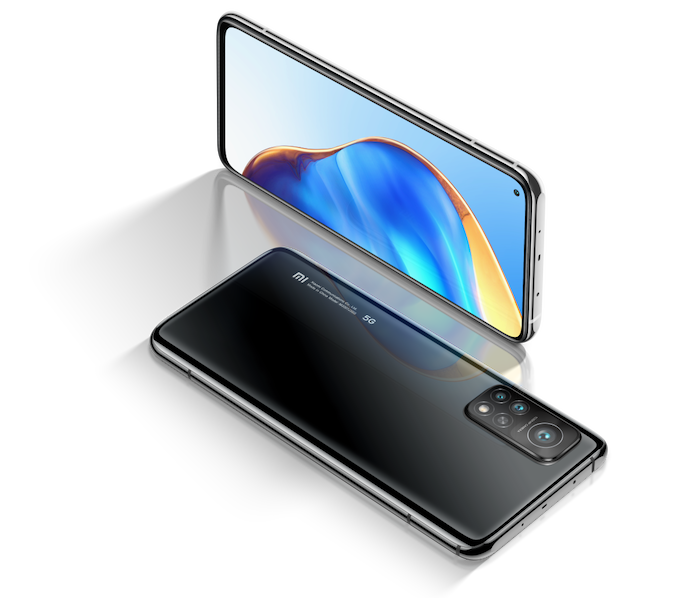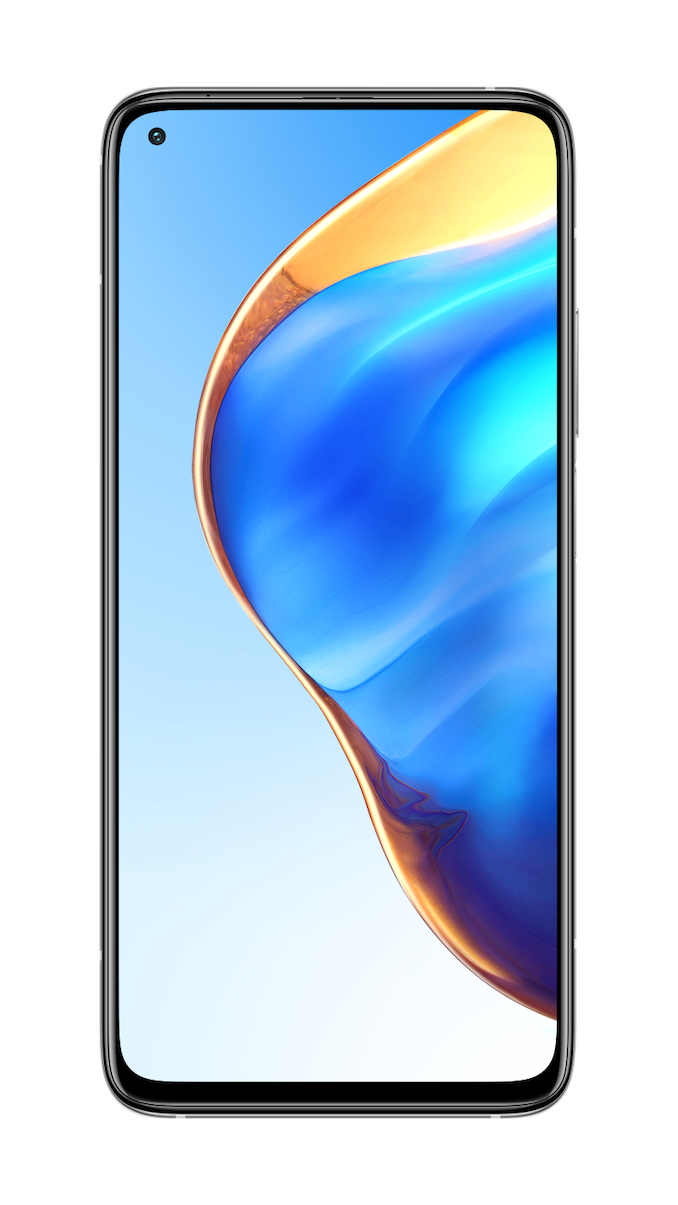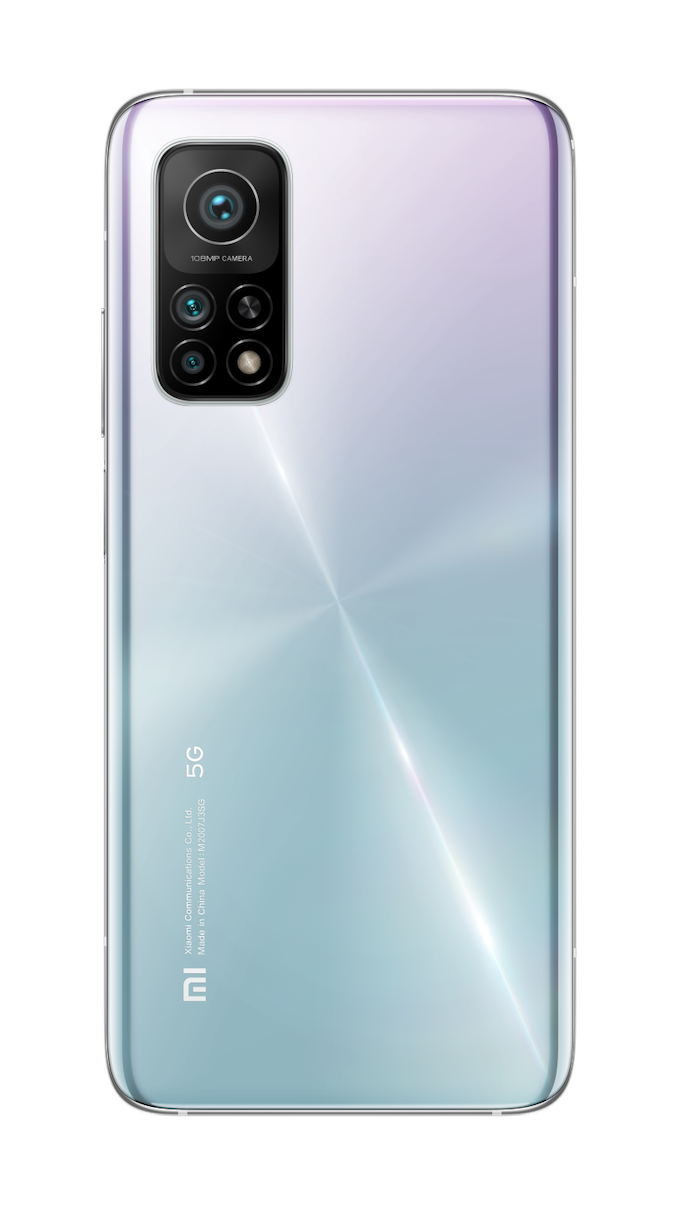Xiaomi Announces Mi 10T & Mi 10T Pro: More Budget, But With 144Hz
by Andrei Frumusanu on September 30, 2020 11:00 AM EST- Posted in
- Mobile
- Smartphones
- Xiaomi
- Mi 10T
- Mi 10T Pro

Today Xiaomi is announcing their late-year flagship devices with the unveiling of the new Mi 10T and Mi 10T Pro devices. The refreshes this year are a bit more unconventional as they aren’t exactly direct successors to the Mi 10 and Mi 10 Pro – but rather lower-cost alternatives. Still, the new devices promise to bring a slew of new software camera features as well as being the first phones on the market to adopt new 144Hz display screens with AdaptiveSync variable refresh rate functionality.
The new Mi 10T’s series biggest selling point is probably their reduced prices, starting at only 499€ for the base model Mi 10T – still delivering you a Snapdragon 865 SoC, a competitive camera as well as the aforementioned 144Hz LCD display, packing a massive 5000mAh battery.
| Xiaomi Mi 10 Series | |||||
| Mi 10T (NEW) |
Mi 10T Pro (NEW) |
Mi 10 |
Mi 10 Pro |
||
| SoC | Qualcomm Snapdragon 865 1x Cortex-A77 @ 2.84GHz 3x Cortex-A77 @ 2.42GHz 4x Cortex-A55 @ 1.80GHz Adreno 640 @ 587MHz |
||||
| DRAM | 6/8GB LPDDR5 | 8GB LPDDR5 | |||
| Display | 6.67" LCD 2400 x 1080 (20:9) 144Hz Refresh AdaptiveSync (VRR) 30-144Hz |
6.67" AMOLED 2340 x 1080 (19.5:9) 90Hz Refresh |
|||
| Size | Height | 165.1mm | 162.58mm | ||
| Width | 76.4mm | 74.80mm | |||
| Depth | 9.33mm | 8.96mm | |||
| Weight | 216g | 218g | 208g | ||
| Battery Capacity | 5000mAh (Typical) 33W Charging In-box (65W capable) |
4780mAh (Typical) 30W Charging |
4500mAh (Typical) 50W Charging |
||
| Wireless Charging | - | 30W | |||
| Rear Cameras | |||||
| Main | 64MP 1/1.7" 0.8µm 4:1 Binning to 16MP / 1.6µm f/1.89 8K video recording |
108MP 1/1.3" 0.8µm 4:1 Binning to 27MP / 1.6µm f/1.69 w/ OIS 8K video recording |
|||
| Telephoto | - | - | 2x Optical 12MP 1.4µm Dual-PD f/2.0 |
||
| Extra Tele Telephoto |
- | - | 5x Optical 8MP 1.0µm f/2.0 w/ OIS |
||
| Ultra-Wide | 13MP 1.12µm f/2.4 123° FoV |
13MP 1.12µm f/2.4 117° FoV |
20MP 1.0µm f/2.2 117° FoV |
||
| Extra | 5MP Macro Camera 1.12µm f/2.4, AF (2-10cm) |
2MP Depth Camera 2MP Macro Camera |
- | ||
| Front Camera | 20MP 0.8µm f/2.2 |
20MP 0.8µm f/2.3 |
|||
| Storage | 128 / 256GB UFS 3.1 |
128 / 256GB UFS 3.1 |
128 / 256GB UFS 3.0 |
256GB UFS 3.0 |
|
| I/O | USB-C | ||||
| Wireless (local) | 802.11ax (Wifi 6), Bluetooth 5.1 |
802.11ax (Wifi 6), Bluetooth 5.1 |
|||
| Cellular | 4G + 5G NR NSA Sub-6GHz | 4G + 5G NR NSA+SA Sub-6GHz | |||
| Special Features | Side capacitive fingerprint sensor Full-range stereo speakers |
Under-screen fingerprint sensor Full-range stereo speakers |
|||
| Splash, Water, Dust Resistance | No rating | ||||
| Dual-SIM | 2x nano-SIM | ||||
| Launch OS | Android 10 w/ MIUI | Android 10 w/ MIUI | |||
| Launch Price | 6+128GB: 499€ 8+256GB: 549€ |
8+128GB: 599€ 8+256GB: 649€ |
8+128GB: 799€ 8+256GB: 899€ |
8+256GB:999€ | |
Starting off with the innards of the phones, Xiaomi has stuck to the Snapdragon 865 which has proven itself to be an outstanding SoC for 2020. The lack of the + variant here isn’t really a disadvantage as users won’t be missing out on much. The Mi 10T comes in either 6 or 8GB LPDDR5 configurations while the Mi 10T Pro has 8GB in both its options. On the storage side of things, we’re seeing 128 or 256GB options, however we’ve now seen an upgrade to newer UFS 3.1 modules.
Whilst populating the specification table above, I’ve noted a rather large quirk on the part of the new Mi 10T phones: Although they’re both advertised as 5G phones, Xiaomi made a footnote notice in the cellular connectivity section that both devices only support NSA 5G networks. This is a rather weird and very unusual aspect to have given that the X55 modem supports both NSA and SA networks, and such a limitation seemingly wasn’t present on the Mi 10 series devices earlier in the year.
If this is related to some cost-cutting measure on the part of the RF-backend of the phones it does put a larger question-mark in regards to the future longevity of the devices once network operators switch to SA-only networks. We’ve reached out to Xiaomi to comment on this aspect of the phones and are awaiting a response.
The new phones are also from a design-standpoint very different to the Mi 10 series devices as they share very little in common between each other, with the new phones representing a more substantial redesign and departure from the sibling flagships from earlier in the year.
The biggest notable change is that the new phones employ a flat display panel as opposed to the curved edge design of the Mi 10 and Mi 10 Pro. Xiaomi says that this choice to revert back to a flat design had been made following feedback by the community, given that there’s still a lot of people that actually prefer the flatter design over curved phones.
Whilst the front is flat, Xiaomi still curves the back of the phone which is important for the ergonomics of the device. Still, the new phones are actually quite larger than their counterparts, growing from 74.8mm width to 76.4mm. They’ve also grown in all other dimensions, being taller, and also thicker at up to 9.3mm. The weight has also slightly increased from 208g to 216g, but Xiaomi does note that their battery capacity has slightly gone up, now reaching 5000mAh.
Xiaomi doesn’t mention wireless charging in their specifications list of the devices so seemingly that’s one of the features that had been on the chopping block when the company had been targeting the achieved low price-points of the phones.
Xiaomi notes that they are using a new battery design which instead of having the anode connected from one end of the battery package, it’s actually connected from the middle of the battery, calling this a “middle middle tab” design. This had been introduced in the POCO X3 earlier this month, and in theory allows for lesser anode resistance given that you’re essentially cutting the anode dimensions in half. This allows for better charge distribution within the battery cell and less heat dissipation, with Xiaomi offering 33W fast-charging out-of-the-box with the included adapter, upgradable to 65W with a separate charger unit.
The new screen is a key feature point of the phone, not only because it’s not a flat design again, but also because Xiaomi has upgraded the specifications to a new 2400 x 1080 LCD panel with refresh rate capabilities up to 144Hz. The cool new feature of the new screen is the inclusion of AdaptiveSync capability, with the panel being able to vary refresh rates on the fly down to 30Hz. This should be the same VRR technology that had been introduced in the Note20 Ultra a month ago and which we investigated in detail in our dedicated article of the feature.
Xiaomi explains that beyond adapting the refresh rate to the actual content frame-rate, resulting in a smoother experience with less judder, the feature also reduces power consumption of the phone by 8% - which is pretty much in line of what we had experienced on the Note20 Ultra, and an important factor in enabling 144Hz refresh rates without too much battery impact on the new devices.
The cameras are probably where things have changed the most compared to the Mi 10 series. Starting off with the Mi 10T Pro – there’s actually no identifiable difference here in the hardware compared to the Mi 10 Pro, as both feature the 108MP Samsung HMX sensor with 0.8µm pixels that bin down to 27MP in regular usage. Besides the software processing which might have evolved over time, one of my gripes about that module was its rather lacking optical quality which reduced the value of the high-resolution sensor.
This time around, the lower-end Mi 10T actually gets a different unit, featuring a 64MP sensor – still being quite large at 1/1.7” and featuring 0.8µm pixels, binning down to 16MP in regular usage. The smaller f/1.89 aperture lens of this module should have better optical quality than its larger sibling, and 64MP is still plenty, however the one critical feature that’s missing here is OIS. Unfortunately, this means that the Mi 10T might not be that great for some video and especially low-light photography.
The ultra-wide module sensor seems seemingly in line with the specifications of the UWA module sensor of the Mi 10, however the optics seem to have changed as Xiaomi is now advertising a larger field of view reaching 123°.
If you’ve noted, the one thing missing from the camera setup is any kind of telephoto module. This is a similar feature choice as the regular Mi 10, with the phones all having to rely on digital cropping on the main camera sensor if you want a tighter framing of your subjects. There’s a 5MP macro camera that focuses between 2 and 10cm – however usually these modules aren’t very good in terms of quality and are just there to inflate the camera module count number for marketing purposes.
Starting at only 499€
The biggest selling-point of the Mi 10T series isn’t so much their features, but rather their prices. At 499€, the Mi 10T is an incredibly aggressively priced phone. Whilst it certainly doesn’t feature every single specification you’d want in a phone, this is still a Snapdragon 865 powered device with a leading edge 144Hz LCD screen, a 5000mAh battery, dual stereo speakers, and a reasonable camera setup. An extra 50€ gets you an extra 2GB of RAM and upgrades the storage to 256GB.
The Mi 10 Pro launches at 599€, essentially the differences here lie solely in the larger camera module and sensor and its OIS inclusion. If that’s worth it to you depends how much you use the cameras of the device – but neither phones are exactly positioned to be top camera performers. The 8+256GB variant comes in at 649€.















19 Comments
View All Comments
flyingpants265 - Wednesday, September 30, 2020 - link
SD Card slot is a big deal because we don't have any way to store all the hours of 4k video and all the huge photos.Personally, I am willing to give up SD card for easier waterproofing, but people shouldn't have to make that choice. The microSD card interface should be 100% completely waterproof.
Holy crap, I just looked at the Xperia 5 II and you are right, it has FRONT STEREO SPEAKERS. Just missing wireless charging which I don't really use anyway. This might become my next phone! Thanks a lot.
damianrobertjones - Tuesday, October 6, 2020 - link
" then we will gladly pay $1400 " - No, just NO! Try not to accept their greed and our validation process of buying something new.implantedcaries - Wednesday, September 30, 2020 - link
"competitive camera as well as the aforementioned 144Hz OLED display,"Guys, it has a LCD display, not a OLED one. You have mentioned the display as an LCD towards the end of the review, where you've discussed the display, but please change the detailing in the intro.
yankeeDDL - Thursday, October 1, 2020 - link
No headphone jack.As a user of a Galaxy S8 and iPhone XR I can attest that at least for me the lack of a jack is a big deal. I have a headset paired with my laptop and both phones and it is a nightmare as any notification from any of the devices temporarily disconnects it from the other ones, which means that I'd need 3 headsets, each paired with one device, and switch as needed. It is just not practical. So I end up unpairing the headset from the phones, but then I need to plug in on the fly if needed, and I have to keep 2 pairs, one with the lightning connector that works only on teh iPhone. A pain in the neck.
drajitshnew - Friday, October 2, 2020 - link
bigger battery fantastic-- lower heat -- even betterin box charger does not have insane speeds but phone capable of insane charging speeds -- best of both worlds
Flat screen -- wonderful. Does anybody remember the last days of CRT? flat screens were a major selling point.
@andrei -- could you PLEASE find out the specifications of the USB port?
iphonebestgamephone - Friday, October 2, 2020 - link
2.0 obviously.Kelvin-MalaysiaInternet - Tuesday, October 6, 2020 - link
Would have been great if the xiaomi mi10t pro has a Super Amoled screen instead of LCD...affordable pricing though.Kelvin
https://www.malaysiainternet.my
damianrobertjones - Tuesday, October 6, 2020 - link
"Starting at only 499€"This price does not validate phones costing OVER 1k. $499 should really be a mid to high price. It's madness how easily prices adjust and we accept.
SantaAna12 - Wednesday, October 7, 2020 - link
No headphone jack = no deal. If you think there is no connection between each phone manufacturer selling crappy wireless headphones and no headphone jack? I got a bridge to sell you.Yeah....I admire the Xiaomi budget offerings...but as also mentioned...no IP rating no sale. My 6P died in about an inch of water. Never again.
Keep driving the market Xiaomi!